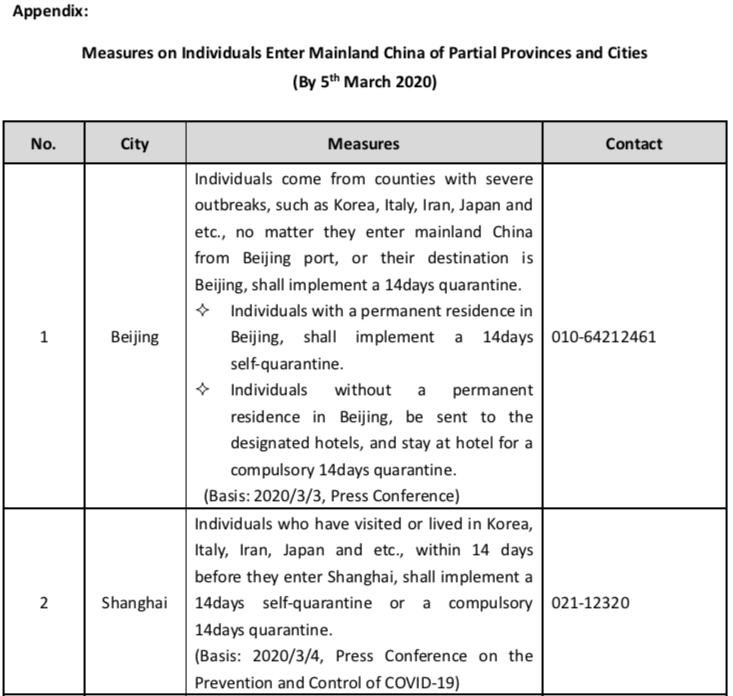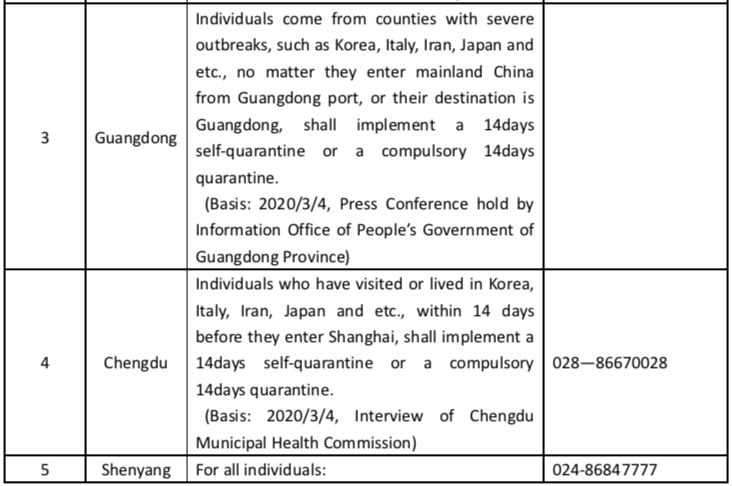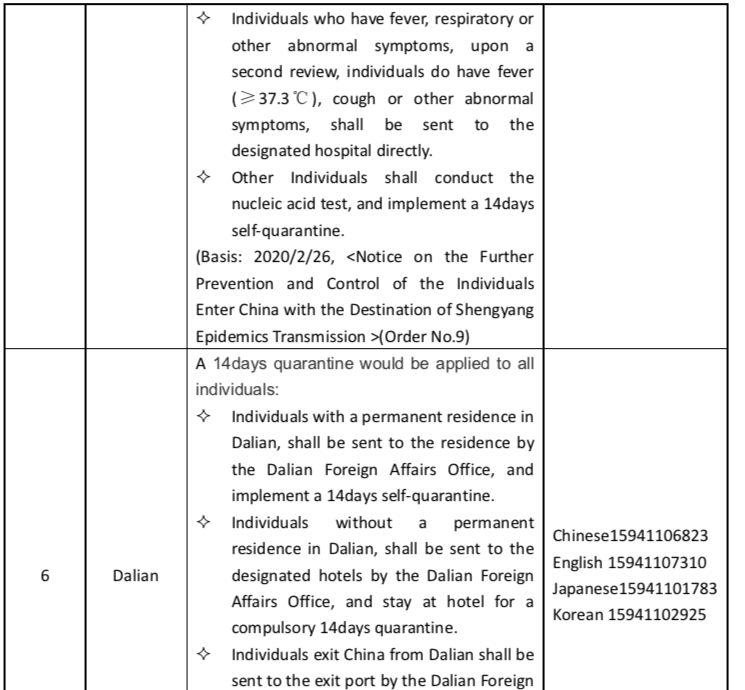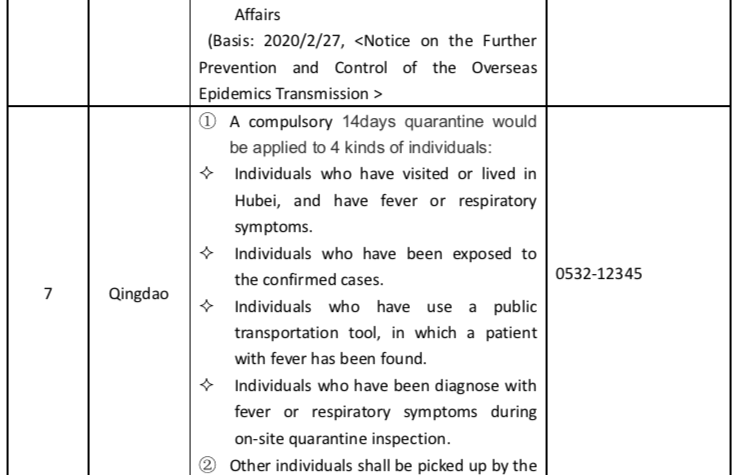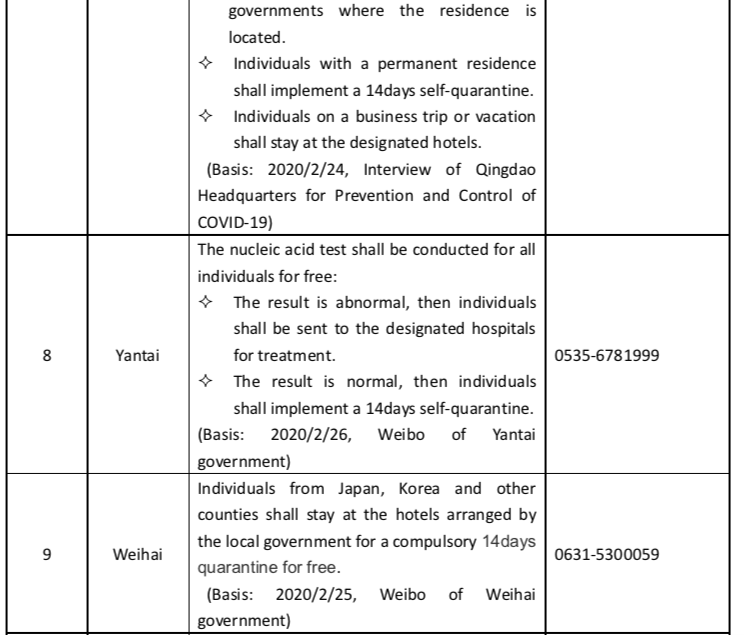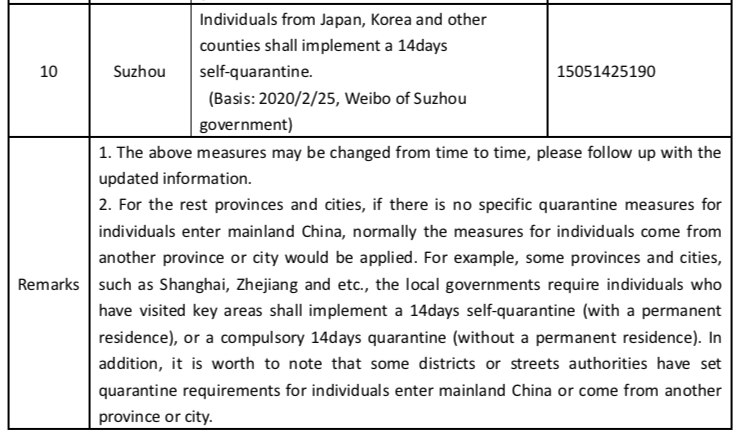Management Tips on the Impact of COVID-19 in March for Foreign-invested Companies
The COVID-19 pandemic has lasted nearly 2 months. In China, the State Council extended spring festive, local governments postponed the date of resumption of business. COVID-19 is under control in China, however, it spreads fast in Japan and Korean. Recently, some cases were founded in Europe and America. COVID-19 has started to behave a lot those days.
March, the significant month for the majority enterprises to resume of business, we have prepared some management tips for reference.
1.Issues concerning individuals enter mainland China
1.1 Entry
On 1st Mar., the Joint Prevention and Control Mechanism of the State Council of China held a press conference on COVID-19. The spokesman mentioned that a special policy on entry would be applied. The policy is “3 Inspection, 3 Review, and 1 Transshipment”. “3 Inspection” refers to as the authority would inspect the health declaration, body temperature, and medical quarantine. Upon the inspection, the authorities would review whether there are individuals who have symptoms; who come from the countries or regions with severe outbreaks; or who have been exposed to confirmed or suspected cases. Finally, if the authorities have found any personnel belong to 4 categories, special preventive and control measures, such as transshipment, isolation or observation, would be applied. The 4 categories include, ① confirmed cases, ② suspected cases, ③ symptomatic persons, and ④ close contacts.
Therefore, while any individual enters mainland China, if any of the 4 categories personnel has been found on the same flight, special preventive and control measures might be applied on other individuals. In addition, it is worth to note that there is no regulation on how many passengers should be applied with the relevant measures while the any of the 4 categories personnel has been found on a flight. In view of this, if a flight comes from a country or region with severe outbreaks, under severe situations, all the passengers might be applied with the relevant measures.
1.2 Quarantine
The current quarantine policies vary from city to city. Those policies could be divided into 3 categories:
The current quarantine policies vary from city to city. Those policies could be divided into 3 categories:
(1) All individuals (including foreigners.) enter the specific cities shall be enforced with a compulsory 14days quarantine, such as, Qingdao, Dalian, Shenyang and etc..
(2) Individuals coming from countries or regions with severe outbreaks, such as Japan, Korea, Italy, Iran and etc., shall be enforced with a 14days self-quarantine or compulsory 14days quarantine, such as, Beijing, Shanghai, Guangzhou and etc..
(3) No special requirements on entry, such as, Shanghai, Beijing and etc.. However, the quarantine policies for all residence would also be applied to individuals who enter mainland China.
1.3 Accommodation
Some individuals who come to mainland China for business trips, normally they have to stay in hotels. As far as we know, currently, a few hotels have declared that overseas personnel could not check-in, and even if the personnel has booked online successfully, he might be refused to check-in onsite.
Therefore, if any individual who has to visit mainland China, it is recommended to confirm with the local centers for disease control and prevention, and hotels of the entry city in advance.
The list of the local policies and contact information of some major cities is enclosed.
2.Management of various working modes
In consideration of the COVID-19 negative impact on the business, and the safety of employees, many companies have adopted various working modes, such as home office, job rotation, off-peak attendance and etc.. Each mode has its advantages and disadvantages, as well as special management priorities. The management priorities for home office and job rotation are set forth hereinafter.
2.1 The management priorities for home office
While working from home, for majority employees, they would be relevantly inefficiency. The root reason is that majority individuals are lack of self-discipline, and majority companies don’t have any regulation on home office.
In fact, with the development of the technologies, such as the implement of 5G, and the current COVID-19 threat, home office would become a normal working mode for partial of the employees in the future. Therefore, an effective and practical home office regulation is a must.
The management priorities for home office include the following aspects.
(1) To clarify the requirements on the working time. For example, a company could require employees to report to their supervisors via email or WeChat at the beginning and end of work.
(2) To clarify the requirements on tasks and time. It is recommended to arrange tasks on a daily or weekly basis based on job characteristics. If it takes a few days or weeks to compete a task, it is also recommended to require employees to update the progress daily or every other day.
(3) To require employees to report, contact, communicate timely on issues at work. When an employee fails to execute this requirement, and causing problems or risks, the company shall punish and educate the employee promptly, by which the employee would be aware of the importance of the job. In addition, the managers should actively and proactively communicate with subordinates, and supervise them.
(4)To arrange periodical and temporary meetings. For example, a leader could hold a morning brief meeting, invite subordinates to review their work. The lead could give comments or suggestions, and assign new tasks. These meetings could unite subordinates, and ignite subordinates’ sense of competition.
(5) Other disciplines, for example, a company could make reasonable requirements on the environment and dress code for attending meetings.
2.2 The management priorities for job rotation
An improper job rotation arrangement may affect business development and be accused by employees. Therefore, a company shall arrange the job rotation by taking the following issues into consideration.
(1) Which departments, posts (including supporting posts) and ranks are necessary on conducting regular business?
(2) How to rotate fairly and reasonably in the same posts?
In addition, in order to avoid cross infection, it is also recommended to arrange several groups with fixed employees for job rotation.
3.To establish the BCM(Business Continuity Management)mechanism
Attacks of 911 in 2001, SARS in 2003, Wenchuan earthquake in 2008 … and COVID-19 in 2019, brought a lot of trouble to companies.
How to recover from the disasters? How to ensure the key business function could resume quickly? BCM mechanism is one of the solutions.
The BCM mechanism has a “6R Model of Business Recovery” .

(Quoted from < BCM Overview and Application > of China Federation of IT Promotion BCM Committee)
A company shall evaluate the risks of disasters, and analyze the impact of the disasters based on its business models and characteristics. And then the company could design the corresponding coping strategy and formulate a comprehensive working mechanism.
A BCM mechanism is not a temporary or formalism outcome, but a continuous process, which includes the training and exercise of the risk awareness of leaders and employees, the practice-based mechanism improvement and etc..
For example, a company has established a good BCM mechanism, if it encounters the problems related to the entry of personnel coming to China, there must be a department which follows up with relevant policies and trends timely, and another department launches preparatory plans while the relevant personnel could not work as scheduled. The plans include a temporary replacement plan by local employees, a remote control plan and etc..
A disaster presents both challenges and opportunities, by which companies could upgrade the internal management mechanism.
